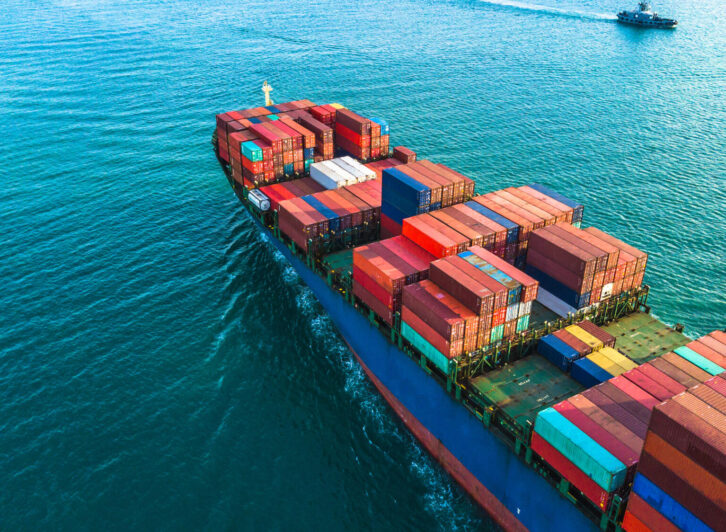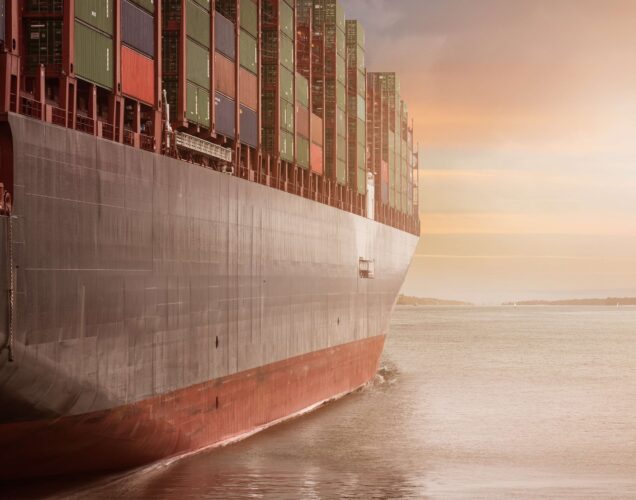Anyone involved with shipping goods from one part of the world to another will know how much the landscape has changed in terms of increased costs. The rise in prices for container shipping and the cost per kg of air freight during the pandemic surprised both importers and forwarding agencies alike, and the industry has been dealing with the implications ever since.
There are one or two key factors behind the rises. Here, we look at how current prices compare to pre-Covid levels and those twenty years ago, and consider how things might change in the next few years.
Smooth shipping and JIT logistics: the world pre-2020
During the 2010s, the global shipping industry had reached a finely balanced equilibrium where goods were able to flow fairly consistently and reliably thanks to various trade deals, adequate capacity at major hubs and the increased use of technology for efficient booking and documentation.
Consignments could be ordered and sent with a level of accuracy that ensured they arrived with minimal wasted resources in exactly the right amounts to meet customer demands – so-called ‘just in time’ manufacturing reigned. Profits may have been down for many shipping companies but the level of trade vastly increased, with the global fleet growing 70% and the number of deliveries increasing by 60% in the decade.
In this efficient, smooth-flowing world, capacity and costs – while fluctuating with the seasons – were manageable, and costs to ship by sea or air remained relatively stable.
Looking at a popular route for manufactured goods pre-pandemic, the average cost of sending a typical 20-foot container from Shanghai (the world’s busiest port, and therefore often cheapest to use due to economies of scale) to Europe was around £592. Very reasonable.
The cost per kg of airfreight on the same trade route varies according to how heavy your package is. In general, the smaller or lighter, the more expensive it will be per kg, but as figures were quite low whatever the weight, the difference per kg between lighter and heavier cargo was not that noticeable. In general, the average cost per kg to send cargo by air freight from China to Europe in 2019 was $3.15.
The new state of play: what it costs to ship today
More recently in November 2021, the average cost of sending a 20-foot container from Shanghai to Southampton was an eye-watering £8,306, or £7,900 to the Port Of London. Europe is noticeably cheaper, with the cost to Rotterdam being £5,736. But this is still an approximate 1000% increase.
By plane, the picture is not much better. Again, the cost varies inversely proportional to the weight of your package, but the differences are more extreme because of the high prices.
What caused the huge increase in shipping costs?
Massive increase in demand
While most of the world was in lockdown, people changed their buying habits and used online purchasing for all sorts of home goods, leisure items, etc. This meant more home shopping and delivery – putting pressure on freight capacity all over the world, meaning container and aeroplane space was at a premium. So prices rose accordingly.
Shortages of containers
The huge increase in shipping demand resulted in backlogs building up at major ports as teams struggled to cope with the number of containers arriving. On top of this, a shortage of drivers meant long delays for the collection of offloaded containers. This had a knock-on effect of problems returning empty containers to the Far East, creating shortages there.
Shortages of slots
The huge demand for capacity in sea and air freight meant that slots were simply in short supply. The law of economics kicked in, and prices started to rise as slots went to highest bidders or those that could afford to pay more.
Shortages of labour
Perhaps a combination of the pandemic taking staff out of the workforce and the huge increase in demand for goods to be transported, the UK and Europe suffered a shortage of drivers and warehouse staff. This had the effect of driving up wages for those available as companies had to pay more to attract people to work for them over their competitors.
Not helped by:
There were a number of other factors affecting the supply chain that contributed to the rise in costs of shipping goods from one place to another.
- The container vessel Ever Given blocking the Suez Canal in March 2021, causing a worldwide backlog of cargo at sea. The industry is still feeling the shockwave today.
- Chinese port closures. Many instances were due to Covid pandemic precautions (in fact, at time of writing, Shenzhen is going into another lockdown). But the other often-overlooked reason is the Chinese government curtailing operations to reduce energy consumption and therefore help meet its ‘green’ targets.
These factors, coupled with the effects of vastly increased demand, add up to a perfect storm for those importing or exporting to/from the UK.
How long will the high costs of shipping continue?
The general consensus amongst those in the UK shipping industry is that these high prices will continue throughout 2022 and perhaps into early 2023. We may have expected costs to decrease as the freight lanes came back to normal and operations became more smooth and easy to predict.
However, the conflict in Ukraine is further exacerbating fuel costs at the time of writing, and we do not yet know how international tensions and hostilities will affect freight costs in the long term.
What we’re doing to mitigate costs and provide value
We’re fortunate to have some of the most experienced people in the business on our ocean and air freight teams. And our Total Logistics overview allows us to optimise all shipments and keep costs as low as possible for our customers.
There have been several instances where we have been able to save customers money by amalgamating several part container loads into one and thus reducing the spend for each client overall.
We also plan our schedule as far in advance as we can, so we know when we’ll have slots at a certain rate and not get caught out by high prices for short-notice consignments.
Looking to optimise costs in your supply chain?
With our immense level of experience and personal attention to detail, your goods can be transported in a way that ensures no space is wasted and every hour between the source and your destination counts.
To discuss your shipping needs with a member of our expert team, call +44 (0)1473 852958 or email us at sales@hemisphere-freight.com
Sources:
- https://www.wired.co.uk/article/supply-chain-crisis-future
- https://www.nytimes.com/2021/09/27/business/economy/china-electricity.html
- https://www.freightos.com/shipping-routes/shipping-from-china-to-the-uk/
- https://inews.co.uk/news/uk-highest-port-costs-europe-china-cargo-docks-backlog-deliveries-1313076
- https://insights.clarksons.net/shipping-decades-how-did-this-one-fare/






